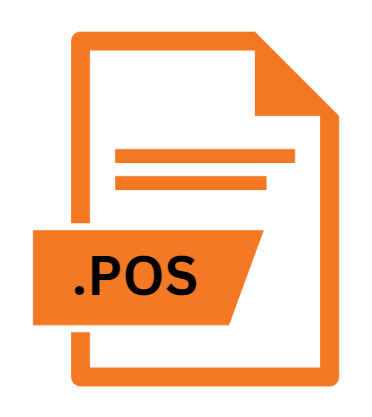.POS File Extension

Trimble Position File
| Developer | Trimble Navigation |
| Popularity | |
| Category | Data Files |
| Format | .POS |
| Cross Platform | Update Soon |
What is an POS file?
The .POS file extension is associated with Trimble’s positioning technology, serving as a container for positional data collected from GPS (Global Positioning System) receivers and other location-aware devices.
These files encapsulate crucial information such as latitude, longitude, altitude, and timestamp, providing a comprehensive record of spatial coordinates at specific instances.
More Information.
The inception of the .POS file extension can be traced back to Trimble’s early endeavors in the field of GPS technology.
As GPS receivers gained popularity and became indispensable tools for surveyors, engineers, and GIS (Geographic Information System) professionals, the demand for efficient data storage and exchange formats surged.
Recognizing this need, Trimble introduced the .POS file format to streamline the handling of positional data, enhancing workflow efficiency and data integrity.
Origin Of This File.
Trimble, a leading provider of positioning technology, introduced the .POS file extension as part of its suite of solutions tailored for surveying, mapping, and navigation purposes.
The need for a standardized format to store and share positional data drove the development of this file type, ensuring compatibility and interoperability across Trimble’s ecosystem and beyond.
File Structure Technical Specification.
.POS file typically comprises a structured layout designed to accommodate various data fields associated with position information. Common components include:
- Header Information: Contains metadata such as file version, creation timestamp, and receiver information.
- Positional Data Records: Consist of individual data points, each containing coordinates (latitude, longitude, altitude), timestamp, and possibly additional attributes like accuracy metrics.
- Footer Section: Concludes the file with any closing remarks or supplementary information.
The technical specifications of the .POS file format may vary depending on the Trimble software or device used for data collection. Adherence to industry-standard conventions ensures compatibility and facilitates seamless integration with third-party applications and systems.
How to Convert the File?
Converting .POS files to alternative formats may be necessary to facilitate compatibility with third-party software or systems.
Trimble provides tools and utilities for converting .POS files to common formats such as CSV (Comma-Separated Values) or Shapefile, which are widely supported across various GIS platforms.
To convert a .POS file:
- Use Trimble’s proprietary software suite, such as Trimble Business Center or Trimble Convert to RINEX, to export the .POS file to a compatible format.
- Alternatively, leverage third-party conversion tools that support .POS file conversion to formats like CSV or KML (Keyhole Markup Language).
Advantages And Disadvantages.
Advantages:
- Compatibility: Trimble’s widespread adoption ensures broad compatibility with Trimble software and devices, fostering interoperability within the ecosystem.
- Data Integrity: The structured format of .POS files facilitate accurate storage and retrieval of positional data, minimizing errors and preserving data integrity.
- Versatility: .POS files can store a wide range of positional data, making them suitable for diverse applications such as surveying, mapping, and navigation.
Disadvantages:
- Proprietary Nature: While Trimble’s dominance in the positioning technology market ensures robust support for .POS files, the proprietary nature of the format may pose challenges for interoperability with non-Trimble systems.
- Complexity: Managing .POS files effectively require familiarity with Trimble’s software ecosystem and data processing workflows, which can be daunting for newcomers or users transitioning from other platforms.
How to Open POS?
Open In Windows
- Trimble Business Center serves as the primary tool for managing .POS files on Windows-based systems, offering a comprehensive suite of features for data processing and analysis.
Open In Linux
- Similar to MacOS, Linux users may opt for virtualization or emulation environments to run Windows software, or explore open-source alternatives that support .POS file import and processing.
Open In MAC
- While Trimble’s native software may not be directly available for MacOS, users can explore virtualization or emulation solutions to run Windows applications or utilize Trimble’s web-based offerings where available.













